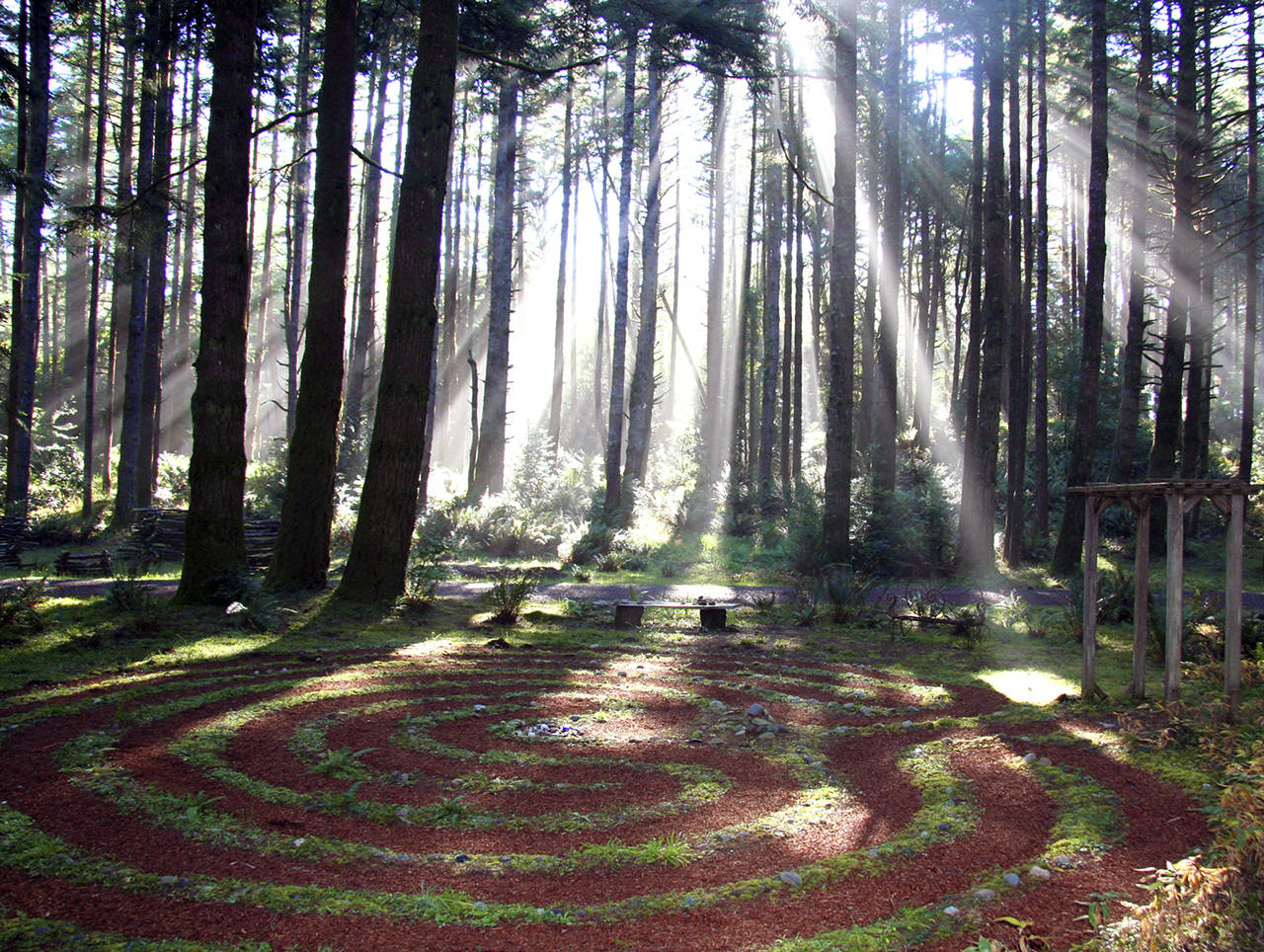By Beth Day Waters
WSU Master Gardener
“Mom, I have cancer.”
The forward movement of spring, with its vivid parade of color and promise, was stopped in its tracks. The constant flow of ideas and plans ground to a halt. The rhythm of my life skipped a beat to learn of Paul’s fight with this dreaded disease.
And so it happens with us all, in ways large and small. We live in a fast-paced, complicated world that demands our all — in addition to the inner personal concerns we each carry. We need meaningful ways to meet life’s challenges with less anxiety. Walk with me in the garden, and let’s consider what we might do to bring our stressful lives into greater calm … to quiet our minds and open our hearts in the whirlwind of deadlines, disappointments, occasional discouragement and even despair.
I hope every outdoor garden, however large or small, has the potential for essential quiet — from the din of traffic, from the sight of utility, from the feeling of hurry, worry and life’s cares. Several years ago, I stopped by Children’s Hospital in Seattle to visit a student. While there, I met a man whose daughter was in critical condition after a car accident. The grounds at Children’s are designed to create the feeling of serenity, and he had taken a brief respite from his family’s painful reality to be still and breathe. Though most of us have neither the garden space nor the financial wherewithal to create such a perfectly serene landscape, there are simple ones we can achieve that invoke a sense of calm.
Last summer my husband, Steve, built and placed a bench in a small garden area close to our house. Somehow it seems remote, though, as plants create an arc of solitude around this simple, beautiful piece of outdoor furniture. When the weather allows, I take clay there to sculpt, a notebook to write, or a book to read. We created a simple water feature to add the sight and sound of moving water, enhancing the still, quiet feeling this space offers … landscape as spirit-mender.
Many years ago, I walked a labyrinth for the first time. While on this circuitous path — a symbol of unity and wholeness — I recognized burdens I’d only vaguely been aware of. By the time I completed the path, I’d released those burdens and felt uplifted in a way I can only inadequately describe as an active form of meditation. I was motivated to understand everything I could about labyrinths.
I read about the work of the Rev. Dr. Lauren Artress and the power of “walking in circles,” and later worked with her when she offered a weekend learning opportunity at Seattle’s St. Mark’s Cathedral. I read books about sacred geometry and took a workshop with Richard Feather Anderson, the brilliant, quirky geometer who helped Artress create the geometry for the first labyrinth at San Francisco’s Grace Cathedral, and who breathed life into the world of math — my nemesis throughout my formal schooling.
I pose two questions: Could we receive cumulative benefit by walking a labyrinth as a regular practice? Might it be worth our time, energy and a portion of our outdoor space to create contemplative paths in our own gardens?
As autumn days shorten, Paul fights to regain his strength in the face of aggressive cancer. He and I have rented a San Francisco apartment since his bone marrow transplant in August. We hope this portion of his medical therapy is behind us by Christmas, and that health and home lie ahead.
It occurs to me that we are the heroes of our own stories, and that our heroism is all the more poignant because we are real. The rhythm of life returns, whatever the results of our triumphs and sorrows. Home can be a contemplative space, and I look forward to making improvements to ours a little at a time — for my daily “five-senses feast,” to welcome Steve at the end of his workday, and to create an environment that feels like coming home to a vacation every day.
In this challenged world, we can offer ourselves opportunities for greater contemplation, quiet for our minds, and an uplifting practice to open our hearts. Let’s create sanctuary and breathe peace.
Beth Day Waters retired last year from her position as art instructor at Aberdeen High School. She has been a Master Gardener since 2010. She gardens on the West Satsop. To learn more about the WSU Master Gardener Program in Grays Harbor and Pacific Counties, visit PNWMG.org.


